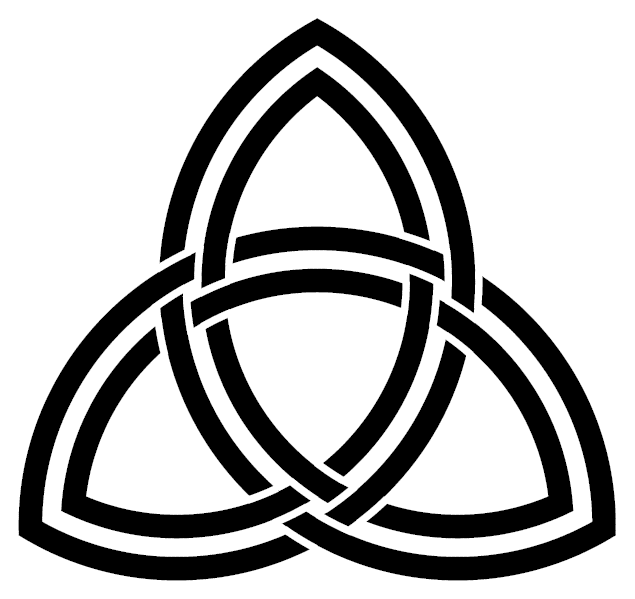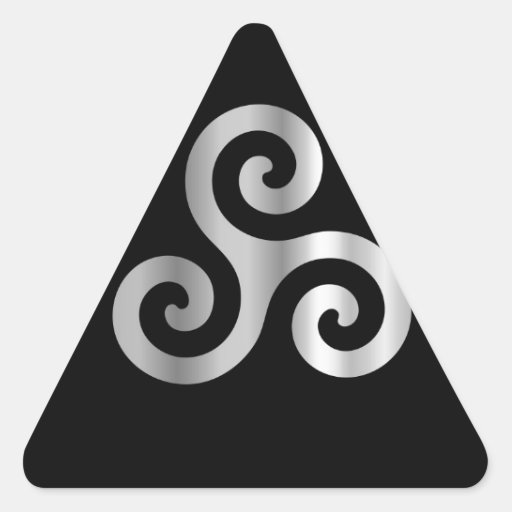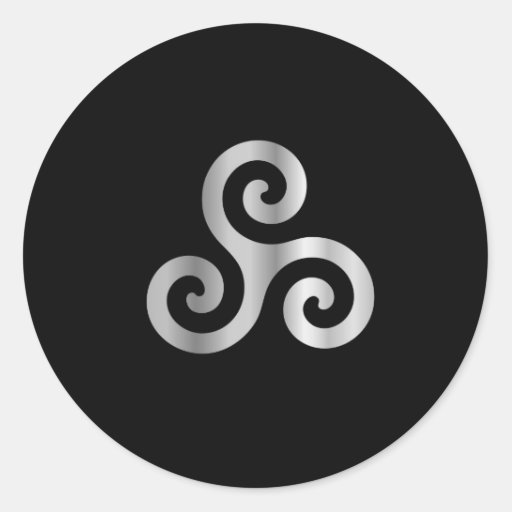Celtic neopaganism
Celtic neo-paganism or Celtic Neopaganism (Celtic Neo -Paganism ) is a generic term for neo-pagan Celtic ideologies and movements, with mainly four main directions can be distinguished: the "modern Druids " or " Neodruidentum " that influenced by wiccans " Celtic Witch "the so-called" Celtic Neoschamanismus "and the self as designating " Neokelten "or" Celtic Reconstructionists ".
In addition to serious attempts to revive the Celtic religion also many pure new inventions such as the "Celtic Tree Horoscope" exist, the "Celtic Tree Calendar ", " The Celtic Mondrad " The " Druids Yoga" Wyda, " Celtic Reiki ", the " Druid Tarot " the " Welsh bardic alphabet " or the magical system of " Coelbren " which are merely imaginative offers of the esoteric market, and are still adopted by many " neo- Celtic ".
Modern Druidism
The movement of the "New Druid " has its roots in the British Freemasonry, and in the Celtic romanticism of the 19th century, mainly caused by the works of the Welsh poet Edward Williams ( 1747-1826 ). Williams, Iolo Morganwg the called himself, was editor of the much-discussed work " Barddas ", which is held by some to this day regarded as authentic medieval compilation, Welsh bardic texts, but by others as a forgery Williams'. He founded in 1792 the Gorsedd of Bards, - a bard association that should connect to Medieval Druidic traditions and still exists today.
From the first not explicitly Masonic inspired and 1781 by Henry Hurle justified Ancient Order of Druids and the " Masonic order of druids " in 1874, founded by Wenworth Little Ancient and Archaeological Order of Druids ( originally not as a neo-pagan order, but as a purely humanitarian organization in the spirit of Freemasonry was intended and under other names only acts as such in the form of numerous spin-offs to this day ) produced numerous follow orders and chips, sometimes complemented each other and influenced. Today's most influential and well-known association of this synthesis of two arising from the British occult orders is probably the founded in 1964 by Ross Nichols as a splinter group of the Ancient Druid Order Order of Bards Ovates and Druids ( OBOD ) dar. However, there are numerous other orders and associations such as the British Druid Order ( BDO), the Ancient Order of Druids in America ( AODA ), the Reformed Druids of North America ( RDNA ), the Ar nDraiocht Fein ( ADF) and the Henge of Keltria.
Although the Neodruiden deal strongly with ancient Celts and British mythology, represents the Keltismus but a new and independent religion represents, which is centrally about the nature worship and astral mysticism. The Neodruiden keep from solstice celebrations and worship as the supreme deity, the " Mother Nature ". The religious celebrations take in "holy trees " as well as ancient monuments such as Stonehenge megalithic instead. Your orders or lodges denote the Neodruiden themselves as " Groves " or keltisierend " Nemeton ". There are in most religious a system of ranks, which officially refers to the ranks or titles of the medieval Irish filid and Druidesses, is unofficial but probably due more to Masonic tradition. The modern Druidry is now a 200 year old tradition, whose main areas of influence are mainly in the UK and France, although there are numerous Neodruidenorden of some importance also in Germany, Switzerland and the United States. Members of the British Druids Society are the only persons to whom it is officially permitted to enter the premises of Stonehenge and perform there for certain events such as winter and summer solstices and spring - like Autumn Äquinoktienrituale.
- See also: Latter-day Druids
Contemporary Celtic Witchcraft
Celtic Witchcraft or " Celtic Witchcraft " is a form of Celtic neo-paganism, which is based on a loose syncretism Celtic (mostly Irish and Welsh ) symbolism with elements of the Wicca religion. Celtic Wicca is often used as a general umbrella term, which is also spoken by Celtic Witchcraft to distinguish the Celtic Wiccan syncretism of the traditional British traditional Wicca. Celtic Witchcraft thus represents a celtic inspired form of "neo -Wiccan " who often feel free flying witches belonging and is common in the self-initiation.
Already Gerald Brousseau Gardner's original Wicca was influenced in many ways by Celtic elements, not least because Gardner himself was a Neodruide of the Universal Bond and a friend of the OBOD founder Ross Nichols. So go including the boiler symbol, the number of thirteen members in a coven and the Flagellation directly to the Scottish witch beliefs of the Renaissance back, also used Gardner's coven sometimes the name Ceridwen and Cernunnos for the Great Mother and the " horned god ". The Alexandrian tradition belonging to couple Stewart and Janet Farrar dealt, also due to their home in Northern Ireland, also with Celtic tradition and brought stronger Celtic elements in their version of the Alexandrian Wicca with a.
The first author to explicitly relied on an alleged unbroken Celtic tradition, was Gerald Gardner's students Raymond Buckland. He was largely responsible for popularizing Wicca in the USA. General Celtic Witchcraft is above all a product of U.S. authors, most of whom are not even Irish or Welsh ancestry. For the popularization of Celtic Wicca and Witchcraft in particular carried the book series at The Mists of Avalon Marion Zimmer Bradley by American writer. She interpreted in the 1980s, the Arthurian legend from a female perspective new and attacked for her portrayal of pre-Christian religion of Britain back to elements of the Wicca cult.
The new Celtic Witchcraft is not a uniform doctrine, but an umbrella term that covers various forms and traditions, including:
- Druidcraft: A mixed tradition of modern Druidism of OBOD and british traditional witchcraft. The term was coined by OBOD Druid Philip Carr- ore - Gomm, who worked for the skeleton of the tradition with the British Wiccan author Vivianne Crowley.
- Pecti Wita also known as " Scottish Witchcraft" or " Pictish Witchcraft": One of the founded by Raymond Buckland traditions. Buckland was a student of Gerald Gardner and initiated into the british traditional witchcraft, but claims to have Pecti - Wita learned from a Scottish sorcerer named Aidan Breac.
Other lines and related traditions use the terms: Caledonii tradition, Celtic Faerie Craft, Cymry Wicca, Druidic Witchcraft, Irish Witchcraft, Faery Wicca, Irish Witta etc.
Keltistischer shamanism
As a " Celtic Neoschamanismus " is called a strongly influenced by core shamanism neo-pagan - Celtic movement, which was popularized by British authors such as Tom Cowan and John and Caitlin Matthews, especially since the early 1980s. Experiences and techniques of core shamanism developed by the American anthropologist Michael Harner be here with elements of the Irish and the Welsh mythology and britannischem " magical " folk traditions combined to the " original Celtic Shamanism " revive. A central aspect of the " Celtic Neoschamanentums " is the experience of the " other world ", which is identified with the world of Celtic gods and spirits. The Celtic shaman go of an eternal " shamanic consciousness" of which is preserved by the deceased ancestors and the Celtic shaman can get through an astral journey of these.
The Celtic shamans interpret the Celtic religion as a worship of nature and the spirits of ancestors and often make use of hallucinogenic substances to go into a trance and to visit the world of these Celtic spirits, with the Celtic shamans invoke legendary figures such as Taliesin, which also should have traveled as mortals the Otherworld. Furthermore, the faith of the Celtic shaman involves the doctrine of rebirth and holistic approaches to medical teaching.
Keltistischer Reconstructionist
The term "Celtic Reconstructionist " refers to the idea of a reconstructed pagan religion that emerged around the mid- 1970s and 1979 erschienenem in Margot Adler's book "Drawing down the Moon" was discussed.
1985 met in the U.S. different Celtic- neo-pagan groups in Wisconsin to "Pagan Spirit Gathering ". In the early 1990s, the term " Celtic Rekonstructionist " began, abbreviated CR, to describe people who are trying to understand an authentic Celtic way for modern Pagans to explore and recreate, gradually enforce. Above all, the Internet for many scattered small groups was an important connecting medium. In the German-speaking countries sat down a few years ago, the self-designation " Celtoi " by which is not generally adopted and accepted by all German CR. Other names, partly across for reconstructed Celtic religion, partly as names of local groups: " Cretima Celtica ", " Senobessus ", " Areisesta ", " Vida Celtica ", " Senistrognata ". Some of the larger groups or organizations are: Celtoi.Net (D), Celtoi eV (D), Fálachus (Ir ), Ildiachus Gaelach (IR, UK), IMBAS (USA), Óenach (Ir, UK), Pagánachd (USA), Tairis (UK), Tuacondate (USA).
Contrary to widespread misunderstanding is not the pre-Christian religion of the Celts be revived in unadulterated form ( what the CR movement referred to as "spiritual reenactment " ) sought, but it is the creation of a modern tradition, a blend of modern ideas inspired by early Celtic beliefs that respects the ancient sources and work from science and archeology. Other sources of inspiration are ethnographic sources such as the Carmina Gadelica. Often prayers and spells pagan adaptations from Christian, medieval insular Celtic literature. At the same time all those things the early Celtic religions are rejected that are unacceptable for modern believers, such as human sacrifice, slavery and patriarchal elements of these early societies.
The groups are usually small and able to get different types of communities, such as households, families or include groves. A Celtic family tree is not considered necessary.
The path is polytheistic and animistic. It is believed that many entities are active in the world that engage in personal life, affect it and respond to the actions of man. Between deities, ancestors, and natural beings is not strictly separated. Animals, trees, mountains, rivers, sacred springs and other natural phenomena and man-made things is awarded a soulfulness.
The ethics based on traditional sources such as the Irish and Welsh Triads, the Brehon Laws, or the sayings of teaching Morann.
The usual mode of worship is the worship, invited to the gods and goddesses, nature spirits and ancestors as guests and food and drink, incense and other things to be sacrificed. As is common among the Celts, ritual objects are broken or otherwise destroyed before they are offered by deposit, sinking into a body of water or combustion in a sacrificial fire. Places of worship are small altars, shrines or clusters of stones inside the home or in the great outdoors.
The Celtic Reconstructionist celebrates the old Irish four main festivals of Samhain, Imbolc, Beltaine and Lughnasadh. The names of the festivals can therefore also Gallo, Cornish, Welsh, Manx, Breton or Scottish Gaelic to be. Gallic and mainland Celtic CR- trailer celebrating the festivals usually using a modified form of the Coligny calendar.
It is interesting in this context, the recent reconstruction of a Celtic column in Neuwied - Irlich.
" Brauchtumspaganismus "
There are also forms of " customs " or " folk -Paganism ", the modern and modern-day folk traditions of pre-Christian as remnants of view, Celtic religion. In English-speaking these include, among others, the " Celtic Traditionalism " (also called " Gaelic Traditionalism ", " Welsh - Traditionalism ", etc.). The latter were some neo-pagans, according reinterpreted in Celtic Christianity, Irish Catholicism, in folk traditions from Ireland, Scotland, Wales and Brittany, living or resuscitated puck and faery and the teachings of the Culdeer and of Pelagius and John Scotus Eriugena, which is also in modern Druidism werden.Zu rezipiert authors of this flow of Celtic Christianity include, among others John O'Donohue and Phyllida Anam -Aire. In German-speaking countries a form of " folksy - Paganism ", is represented without stronger reference to Christianity, including by Manfred Böckl, Inge Resch - Rauter, Georg pipe plug and partially - Wolf -Dieter Storl and expressed, for instance under the name " Alpenschamanismus ". Some groups see also Perchten, Krampus and carnival customs and Laubmann, Jul- light measurement, Midsummer, Easter, May Day, reapers fixed, Kräuterweih and even Nicholas customs in these traditions.










